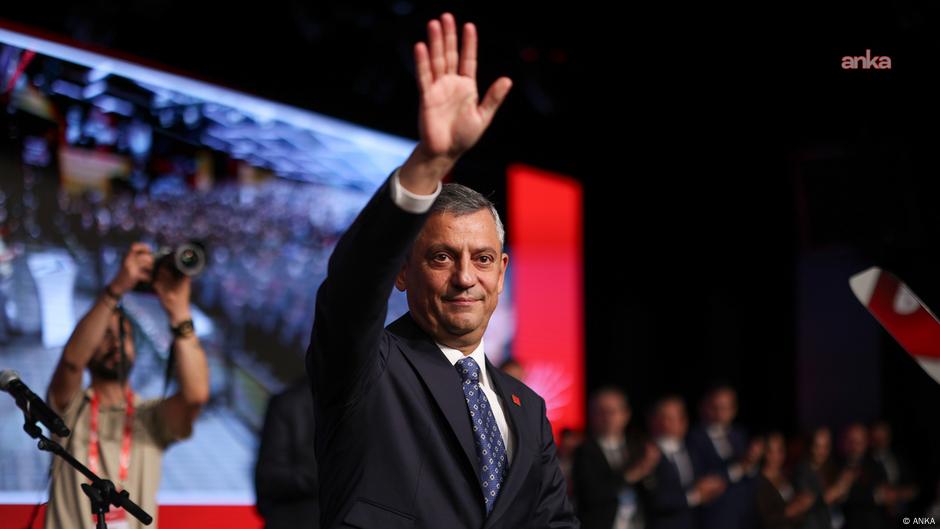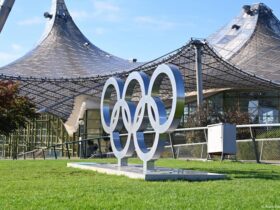The EU is currently debating whether to use frozen Russian assets to pay war reparations to Ukraine. In addition to Russia’s central bank funds, European depositories also hold millions of frozen securities of Russian private investors who are not on Western sanctions lists.
Legally, these investors are entitled to reclaim their assets, but in practice, very few have succeeded.
Zhanna Nemtsova, daughter of slain Russian opposition leader Boris Nemtsov and co-founder of the Boris Nemtsov Foundation, has been drawing attention to the issue for months. Speaking to DW, he argued that private investors’ assets should be released and proposed several steps to make this possible.
How were Russian assets seized?
Custody of Russian securities in depository banks is carried out through the central securities depository of Russia – the National Settlement Depository (NSD), which is a subsidiary of the Moscow Exchange.
However, for foreign securities that Russians could buy with a few clicks through domestic brokerage apps before the war in Ukraine, the NSD acted only as an intermediary. The securities were held primarily in two European depositories: Belgium’s Euroclear and Luxembourg’s Clearstream.
Many Russian investors realized how the custody system worked only in the spring of 2022, when they suddenly found themselves unable to conduct transactions. Their securities were frozen in the same way as Russian state reserves and the assets of individuals and organizations subject to sanctions.
Euroclear and Clearstream severed ties with the NSD in March 2022 shortly after the war began in response to the Russian central bank’s decision to ban Russian brokers from selling securities on behalf of foreign clients.
In June, the European Commission legally codified the Euroclear and Clearstream decisions. The EU’s sixth sanctions package included an explicit ban on European entities collaborating with NSD.
How many Russian investors are affected?
Neither Russian nor European authorities have published data on the volume of frozen private assets, and the depositaries themselves have not provided any figures. Only the total value of frozen assets in Europe is known, including Russian state reserves, which form the bulk of the total.
According to news agency Reuters, the total amount is about €210 billion ($243 billion), of which €185 billion is held by Euroclear.
Russian authorities estimate that worldwide frozen assets of Russian legal entities and individuals amount to approximately 5.7 trillion rubles – equivalent to approximately €12 billion at current exchange rates – of which approximately 20% belongs to private individuals.
The exact number of investors is also unknown. Russian Finance Minister Anton Siluanov cites 3.5 million people, while central bank representatives say the number is closer to five million.
The discrepancy may be due to the high estimate that includes not only direct holders of foreign securities but also those who have invested indirectly, for example through investment funds.
In the broken down figures, the average amount held per investor comes to around €2,400.
A Russian broker told Zhanna Nemzova that most of his clients have amounts of about 200,000 rubles locked up, or a little more than two average monthly Russian salaries.
How can investors reclaim their assets?
Investors can try to get their assets back if they are not on the sanctions list. To do this, they must obtain a license from the Belgian Ministry of Finance, which regulates Euroclear. If assets are frozen on Clearstream, they must apply to the Luxembourg financial authorities.
However, in practice, it is almost impossible to do this without legal assistance. Furthermore, legal costs usually far exceed the average value of frozen assets.
According to Nemzova, one investor who managed to secure the release of his funds from both Euroclear and Clearstream said the process cost him €60,000.
The first step will be to find a lawyer “to act as a guarantor or him,” Alexey Klimyuk, senior investment adviser at Moscow-based asset management company Alfa Capital, told DW.
The guarantor must then confirm that the applicant owns the assets, is not subject to restrictions, and that the transaction for which the license is being requested does not benefit an approved person.
In addition, the applicant must have an investment account in the EU, Switzerland, UK or US, as transfers to accounts in Russia are not allowed. It is impossible to open such an account without a residence permit.
According to the news platform brussels signalBelgium received 1,214 license applications last year, of which 232 were approved. Most of the applicants were investors with dual citizenship – Russian and other European nationalities.
“You might think I’m protecting the interests of the rich, but I’m not,” says Zhanna Nemzova. “The existing process actually protects their interests. What I want is for them to make it.” [funds] more accessible.”
What are the prospects for those affected?
According to Nemtsova, the first step is to draw public attention to the problem, as European officials often “fail to understand the full consequences of their sanctions policies” and the issue is hardly covered in the European media.
As a next step, she proposes taking an inventory of all frozen assets to determine which assets belong to private investors who are not on the sanctions list. After that, the Belgian and Luxembourg authorities should create a simplified procedure for investors who cannot afford expensive lawyers.
Nemtsova believes such changes will only benefit people with Western residence permits or citizenship. Everyone else will probably have to wait until the war ends and the embargo is eventually lifted.
The fate of the Russian central bank’s frozen assets is in the hands of the European Commission. When DW asked whether the EU executive was also considering the future of private investors’ assets, a Commission representative declined to comment, saying only in a statement to DW that it was a “hypothetical scenario.”
Even though details of the frozen assets have not been disclosed, it is clear that they mainly include US securities popular among Russian investors.
According to broker data reviewed by DW at the end of 2021, the most sought-after shares were in US companies Alphabet, Apple, Boeing, Intel, MetaTrader, Microsoft and Tesla, as well as Chinese companies Alibaba and Baidu.
To issue US-based assets, a license from the US Treasury Department’s Office of Foreign Assets Control (OFAC) is required. OFAC has sanctioned both Moscow Exchange and NSD. According to lawyers representing Russian investors, as reported by Russian news outlets rbcOFAC has not yet issued a single such license.
This article was originally written in Russian






Leave a Reply